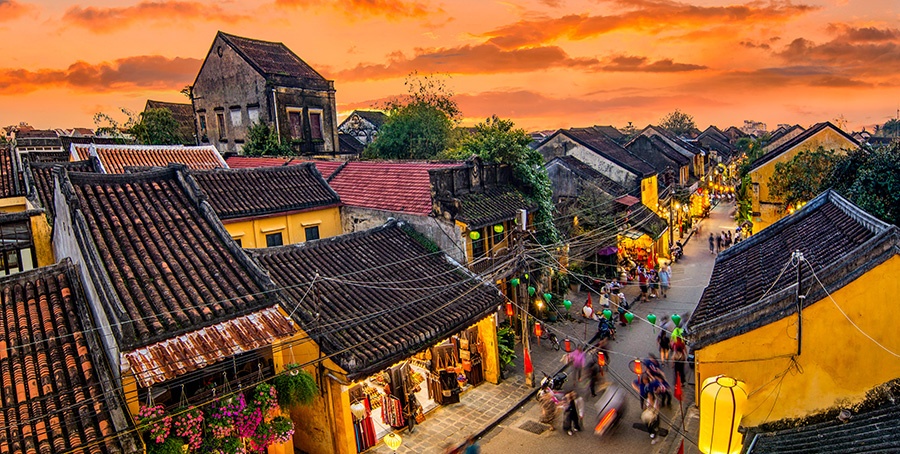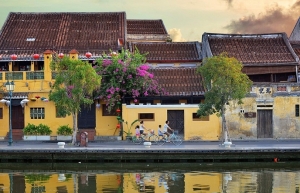Renowned destinations named in creative cities network
On World Cities Day on October 31, a total of 55 cities joined the network (UCCN) upon the designation by UNESCO general director Audrey Azoulay.
 |
| Hoi An town in the central province of Quang Nam |
“The cities in the UCCN are leading the way when it comes to enhancing access to culture and galvanising the power of creativity for urban resilience and development,” said Azoulay.
New cities were acknowledged for their strong commitment to harnessing culture and creativity as part of their development strategies and displaying innovative practices in human-centred urban planning.
With the latest additions, the network now counts 350 cities in more than one hundred countries, representing seven creative fields.
The newly designated cities will cooperate with network members to strengthen their resilience in the face of evolving threats such as climate change, rising inequality, and rapid urbanisation, with 68 per cent of the world’s population projected to live in urban areas by 2050.
An upcoming policy paper on the UCCN will testify to the leading role played by cities towards the achievement of the 2030 Agenda, while demonstrating ways in which UNESCO supports members by fostering dialogue, peer-to-peer learning, and collaboration.
The development of sustainable cities capable of joining the UCCN is one of the important tasks for the country in meeting international commitments as well as the objectives in important resolutions and strategies on cultural development.
In Vietnam, Hanoi was the first city to join in 2019, Dalat and eight other cities participated in a project on dveloping a network of creative cities within the UNESCO creative city system, as implemented by the Ministry of Culture, Sports, and Tourism (MoCST) in 2021-2022.
This year, the two provinces of Quang Nam and Lam Dong prepared dossiers to seek recognition from UNESCO.
Vice Chairman of Hoi An People’s Committee Nguyen Van Lanh said that by selecting the field of craft and folk arts to build the dossier, Hoi An hopes to fully capitalise on its more than 400 years of heritage.
Hoi An is home to many traditional craft villages, including more than 100 in its ancient quarter alone, such as silk and leather product making, tailoring, embroidery, woodcarving, and pottery.
It also boasts a rich architectural heritage with a complex of century-old houses, Lanh said, while some of these craft villages have been recognised as national intangible heritages. Bai Choi Art has also been recognised as an intangible cultural heritage of humanity.
“Hoi An has long been a role model in recovering the values of craft villages and folk arts. Here, craftsmen, and anyone who has ideas can freely make artistic creations,” he added.
Joining the UCCN is favourable for Hoi An to draw in investment, focus on educational development programmes, and expand relationships. The ancient city can also access and absorb experiences from international experts, UNESCO, and other cities and countries to apply them flexibly to Hoi An’s unique development model.
This ancient quarter will implement committed initiatives such as the Kim Bong carpentry project, nurturing young creative talents, the Hoi An Creativity in the Digital Space scheme, and international initiatives such as the International Folk Art Festival, International Lantern Festival, and Hoi An Creative House.
The city will also promote development and creativity in other fields, connect, exchange, and share experiences with other members inside and outside the network.
Meanwhile, Dalat is already a popular tourist attraction and nearly two decades ago, it was recognised by UNESCO as the Masterpiece of the Oral and Intangible Heritage of Humanity.
Nguyen Phuong Hoa, director of the Department of International Cooperation under the MoCST, said that the city’s natural landscape, architecture and culture was a factor attracting many to learn about the city. Since then, it has become a place of diverse lifestyles and cultural expressions, creating a lively space and artistic community.
“Dalat plans to become an ecological city. To realise this, the city considers culture and creativity as the driving force for development. In particular, music plays a strategic role in mobilising a network of cultural actors and services to promote sustainable urban development and improve the quality of life,” Hoa added.
The authorities and people of Dalat hope that promoting music will help strengthen the image of the city as a place where people live in harmony with nature, preserving and promoting cultural diversity and biodiversity.n
The newly designated cities have been invited to participate in the 2024 UCCN annual conference, to be held in July 2024 in Braga, Portugal.
 | Hoi An: A captivating heritage city Hoi An, an enchanting world heritage site, has consistently been hailed as one of the most alluring and romantic ancient towns in the world. It serves as a remarkable exemplar of traditional urban areas and coastal trading ports in the East Asian region. |
What the stars mean:
★ Poor ★ ★ Promising ★★★ Good ★★★★ Very good ★★★★★ Exceptional
 Tag:
Tag:
Related Contents
Latest News
More News
- The destinations powering Vietnam’s festive season travel demand (December 04, 2025 | 18:33)
- Vietnam named among the world’s most exciting winter destinations (December 04, 2025 | 15:10)
- Phu Tho emerges as northern Vietnam’s new tourism hub (December 01, 2025 | 17:00)
- Vietjet completes Airbus A320/A321 updates ahead of deadline (December 01, 2025 | 09:49)
- Vietjet resumes Con Dao flights from early December (November 28, 2025 | 15:24)
- Free tickets, Lunar New Year promotions on offer at Vietjet Mega Livestream (November 26, 2025 | 15:32)
- Scandinavian Airlines and Vietnam Airlines broaden agreement with new routes (November 25, 2025 | 17:04)
- Halong Cruise Port welcomes over 3,100 international visitors (November 12, 2025 | 18:06)
- Vietnam.travel climbs to second place in Southeast Asia website rankings (November 12, 2025 | 18:01)
- Cat Ba named among Southeast Asia’s top island adventures (November 11, 2025 | 18:09)























 Mobile Version
Mobile Version